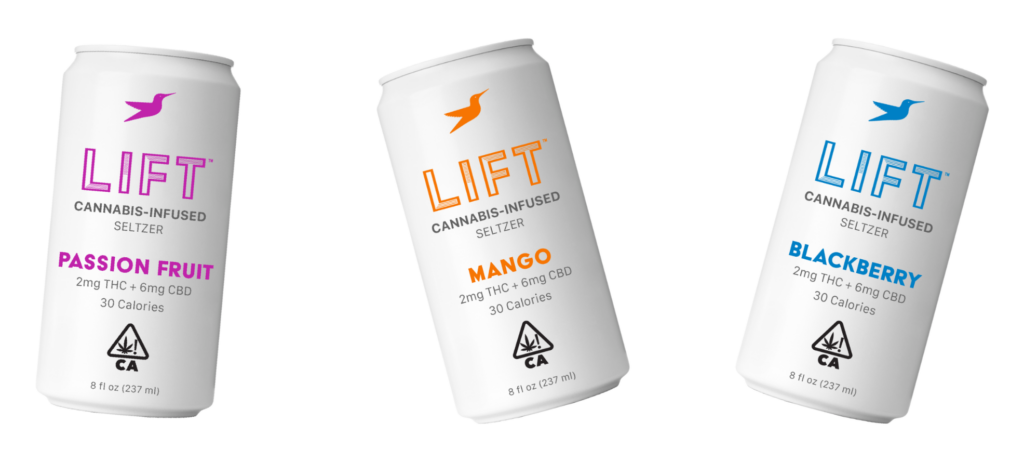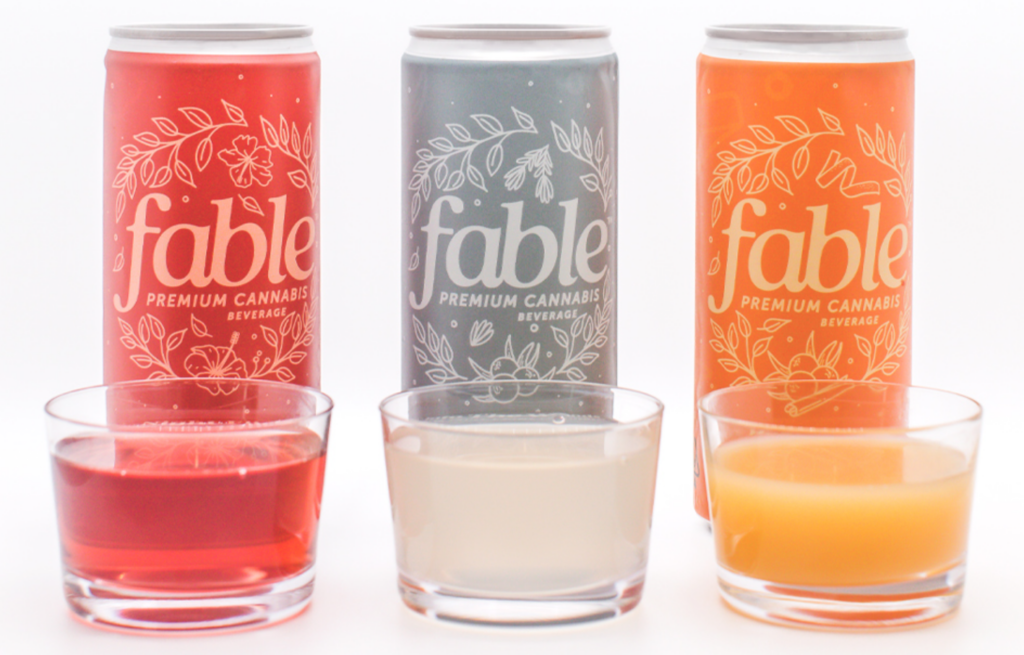Craft Beverage Blog
Label Design Requirements for THC / Cannabis-Infused Beverages: A Deep Dive
As the cannabis industry continues to gain momentum and acceptance, the market for THC / cannabis-infused beverages is experiencing significant growth. These beverages offer a convenient and discreet way to enjoy the effects of THC, making them an attractive option for consumers. However, like any regulated product, THC-infused beverages come with specific requirements for labeling and packaging to ensure safety, transparency, and compliance. In this comprehensive guide, we’ll delve into the label design requirements for beverages containing THC, providing a clear understanding of what’s needed to bring these products to market.
It’s important to remember this is in no way a guide but simply a general overview of typical guidelines set by individual States. Always refer to and stay updated with state-specific guidelines to ensure compliance is met.
A Word About Hemp-Derived Cannabinoid Beverages
You may have noticed a recent surge in legal hemp-derived Delta-9 (and Delta-8) THC beverages on the market. The primary distinction between hemp-derived THC and marijuana-derived THC beverages lies in the plant source and composition of cannabinoids. Despite the source (hemp or marijuana), the effects of Delta-9 THC remain the same—both producing relaxing and euphoric sensations. These variants also share the same molecular structure, differing only in the position of a double bond between two carbon atoms (source).
Next, we’ll talk about how and why certain hemp-derived THC products are legal. Hemp-derived products that contain no more than .3% THC (on a dry weight basis) are no longer considered illegal controlled substances thanks to the 2018 Agricultural Improvement Act (2018 Farm Bill).
So what does this mean for label requirements? As you may have guessed, it’s complicated. Some states have labeling guidelines for marijuana-infused products, while others have label guidelines for THC-infused products, so it’s important to refer to your state-specific guidelines.

The Cannabis Revolution: THC-Infused Beverages
Before we explore the intricacies of label design requirements, it’s essential to acknowledge the remarkable shift in the perception of cannabis. The legalization of cannabis for both medical and recreational use in several states and countries has paved the way for a diverse range of cannabis products, including THC-infused beverages.
These beverages are crafted to deliver the therapeutic and recreational effects of THC, offering an alternative to traditional methods of consumption like smoking or vaping. They are discreet, consistent, and convenient, making them a popular choice for many consumers. However, this popularity comes with regulatory oversight, including stringent labeling and packaging requirements.

Labeling and Packaging: A Balancing Act
Designing labels for THC-infused beverages is a delicate balancing act. On one hand, the label needs to be engaging and informative, reflecting the brand’s identity and creating a connection with the consumer. On the other, it must adhere to stringent regulatory requirements, ensuring that consumers are well-informed and safe.
Key Label Design Requirements for THC-Infused Beverages
Let’s break down common label design requirements for THC-infused beverages:
- Clear and Legible Text: All information on the label must be clear and legible, ensuring consumers can easily read and understand the content. The text size and font must be easy to see and comprehend.
- THC and CBD Content: The label must clearly indicate the THC and CBD content in the product. This is typically expressed in milligrams, and the information should be accurate and consistent with laboratory testing.
- Warning Statements: Health warning statements are mandatory. These warnings highlight the potential risks associated with THC consumption and are essential for consumer safety.
- Serving Size: The label must specify the serving size, providing guidance on the recommended dosage.
- Ingredients: A comprehensive list of ingredients is required, ensuring that consumers are aware of what they’re consuming. This includes any potential allergens.
- Child-Resistant Packaging: While not a direct label requirement, the packaging must be child-resistant to prevent accidental ingestion by children.
- Universal Symbols: Certain universal symbols must be included on the label to signify THC content and provide warnings about cannabis use.
- Licensee name and phone number or website: The licensee name can be either the name of the licensed cultivator or licensee packaging the product and must be a name listed on the license certificate (either the legal business name or the registered DBA).
- Brand Identity: While adhering to regulatory requirements is paramount, it’s equally crucial to maintain a strong brand identity. The label should reflect the essence of the brand and connect with the target audience.
- Compliance with State Regulations: It’s vital to understand that label requirements may vary from one state to another, depending on local cannabis regulations. Staying updated with state-specific guidelines is essential to ensure compliance.
- Scannable QR code that links to the COA (common for Hemp-derived THC and CBD beverages).

Challenges and Creative Solutions
Designing labels for THC-infused beverages presents unique challenges. The need for both regulatory compliance and brand identity can be a complex task. However, it also offers opportunities for creative solutions. Here are a few tips to navigate this terrain:
- Transparency: Embrace transparency in your labeling. Clearly communicate THC and CBD content, ingredients, and any relevant warnings.
- Engaging Design: Create an engaging label design that captures the essence of your brand. Consider using color, typography, and imagery to make your product stand out on the shelf.
- Consumer Education: Use your label as a tool for consumer education. You can provide information about responsible consumption, the potential effects of THC, and resources for further information.
- Professional Guidance: If you’re new to the cannabis industry, seeking professional guidance can be invaluable. Regulatory experts and graphic designers with experience in the field can help you navigate the complexities of label design.
THC Beverage Label Requirements by State
The National Cannabis Packaging and Labeling Standards Committee Cannabis Packaging and Labeling, Regulatory Recommendations for States and Nations
THC Warning Symbols by State
Warning statements
Follow individual State guidelines for specific warning statements and labeling requirements. The following general recommendations are from The National Cannabis Packaging and Labeling Standards Committee:
For all cannabis products:
“KEEP OUT OF REACH OF CHILDREN AND PETS,” and “This product may be unlawful outside of the State of [insert state].”
For all adult-use cannabis products:
“For use only by adults twenty-one and older.”
For psychoactive cannabis products:
“This product may have intoxicating effects. Do not drive or operate heavy machinery while under the influence of cannabis.”
For all ingestible infused products and activated concentrates intended to be cooked with, eaten, or otherwise swallowed and digested:
“Activation times vary but may be up to two (2) hours when this product is eaten or swallowed,” or an alternative statement supported by data from an activation time study and approved by the Department.
California Government Warning Statement for nonmanufactured cannabis goods (in capital and bold letters):
“GOVERNMENT WARNING: THIS PACKAGE CONTAINS CANNABIS, A SCHEDULE I CONTROLLED SUBSTANCE. KEEP OUT OF REACH OF CHILDREN AND ANIMALS. CANNABIS MAY ONLY BE POSSESSED OR CONSUMED BY PERSONS 21 YEARS OF AGE OR OLDER UNLESS THE PERSON IS A QUALIFIED PATIENT. CANNABIS USE WHILE PREGNANT OR BREASTFEEDING MAY BE HARMFUL. CONSUMPTION OF
CANNABIS IMPAIRS YOUR ABILITY TO DRIVE AND OPERATE MACHINERY. PLEASE USE EXTREME CAUTION.”
The Future of THC-Infused Beverages
As the cannabis industry continues to evolve, so will the regulations governing THC-infused beverages. The key to success in this emerging market is staying informed, complying with regulations, and designing labels that balance creativity with responsibility.
In conclusion, the label design requirements for THC-infused beverages are a crucial aspect of bringing these products to market. It’s a dynamic and ever-evolving field, where creativity and compliance go hand in hand. By understanding the key requirements and embracing the unique challenges, brands can thrive in this exciting new landscape.






